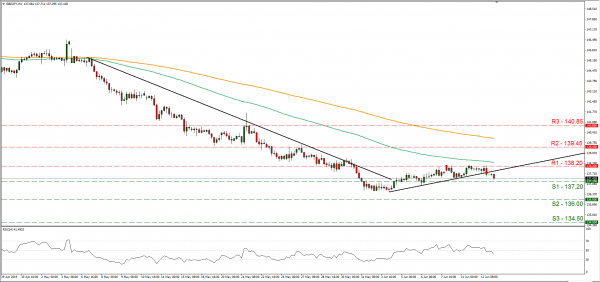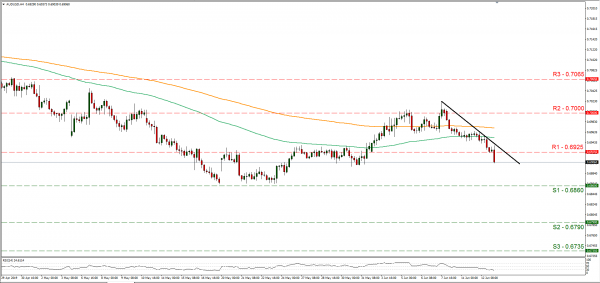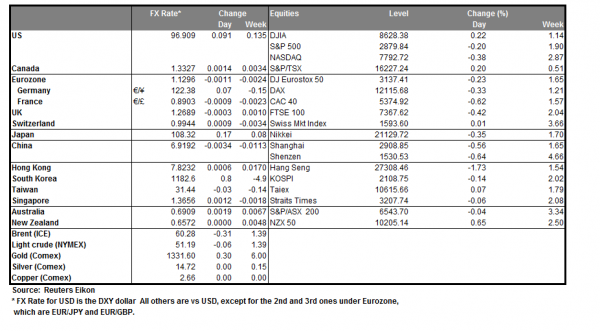The pound made some gains against a number of its counterparts yesterday, as hopes grew for a possible blocking of a no deal scenario. However the UK Parliament rejected blocking the blocking by a rather thin majority, hence the pound was forced to relent any gains made. With the election of a new leader not being over until the 22nd of July, time limits seem to be getting very tight for the UK to decide on Brexit. The election process in the conservative party is to begin and Boris Johnson is expected to be the favorite. We see the case for the pound to be Brexit driven, yet at the same time we would like to point out that the moderation in the pounds’ reaction yesterday, may show how many negative scenarios the pound has priced in, at the moment. GBP/JPY dropped yesterday, aiming for the 137.20 (S1) support line. Technically, as the pair has broken the upward trendline incepted since the 4th of June, we switch our bullish outlook in favor of a sideways scenario. Should the pair come under the selling interest of the market, we could see it breaking the 137.20 (S1) support line and aim for the 136.00 (S2) support level. Should the pair’s long positions be favored by the market, we could see it breaking the 138.20 (R1) resistance line and aim for the 139.45 (R2) resistance level.
USD gains on trade tension easing
The USD marked some gains on Wednesday and stabilized somewhat during today’s Asian session as trade tensions seem to ease a bit. US president Trump expressed optimism over making a deal with China and pressures on the USD seem to be reduced. The US president had expressed a “feeling” that a US-China trade deal could be reached, yet at the same time threatened to increase tariffs on US imports from China should there be no agreement. Our worries however, were enhanced about a possible over spilling of the trade tensions in Europe and Japan, as the US president had blamed the EUR devaluation of putting the US in disadvantage. Analysts point out that the USD may have also benefited from the weak performance of other currencies and we tend to concur with that opinion, especially the EUR’s. We could see the USD be somewhat less data driven today and new headlines could influence its direction. AUD/USD dropped yesterday and during today’s Asian session broke the 0.6925 (R1) support line (now turned to resistance). Technically the pair’s direction seems to be dominated by the downward trendline, incepted since the 7th of June, hence at the current stage we maintain our bearish bias. Should the bears maintain control over the pair’s direction, we could see it aiming for the 0.6860 (S1) support line. Should the bulls take over, we could see the pair breaking the 0.6925 (R1) resistance line and aim for higher grounds.
Other economic highlights, today and early tomorrow
Today during the late European session, we get from Germany the final HICP rate for May and from Switzerland SNB’s interest rate decision, which is widely expected to remain on hold at -0.75%. We wouldn’t be surprised to see the bank issuing an accompanying statement with its content tilted towards the dovish side, which in turn could weaken the CHF somewhat. Also, during the European session, we get Eurozone’s industrial production growth rate for May and later on the release of OPEC’s monthly report may spark some interest among oil traders. In the American session, we get the US initial jobless claims figure and during tomorrow’s Asian session, we get Japan’s final industrial production growth rate for April.
Support: 137.20 (S1), 136.00 (S2), 134.50 (S3)
Resistance: 138.20 (R1), 139.45 (R2), 140.85 (R3)
Support: 0.6860 (S1), 0.6790 (S2), 0.6735 (S3)
Resistance: 0.6925 (R1), 0.7000 (R2), 0.7065 (R3)

















